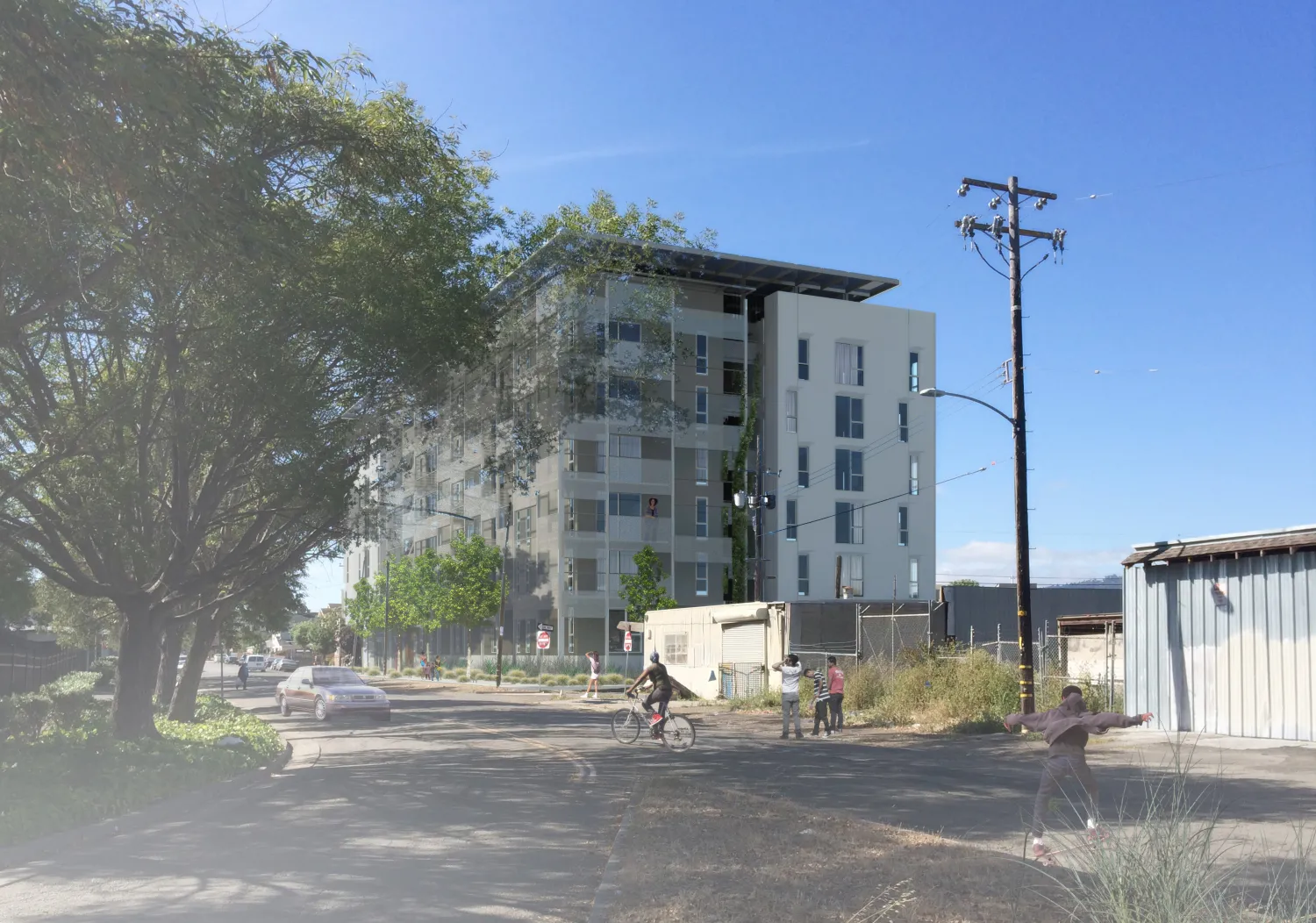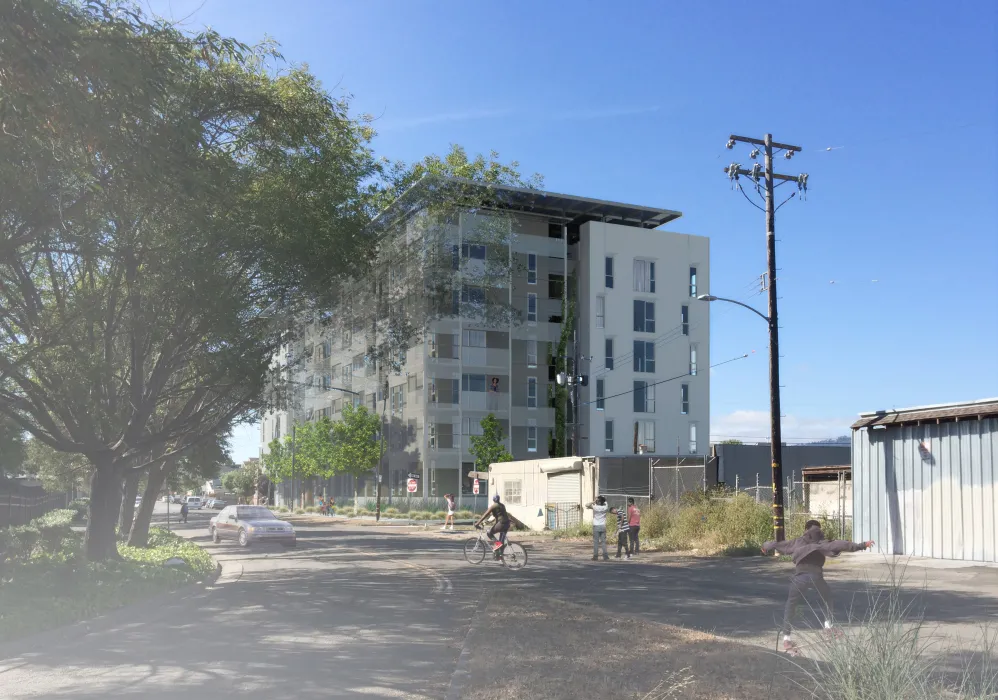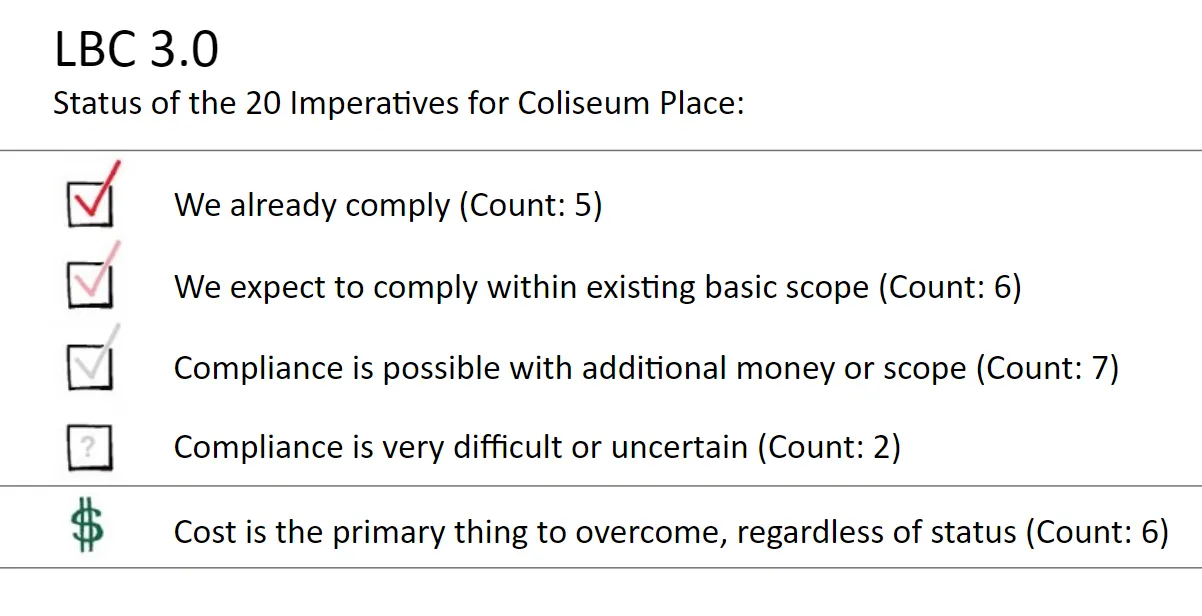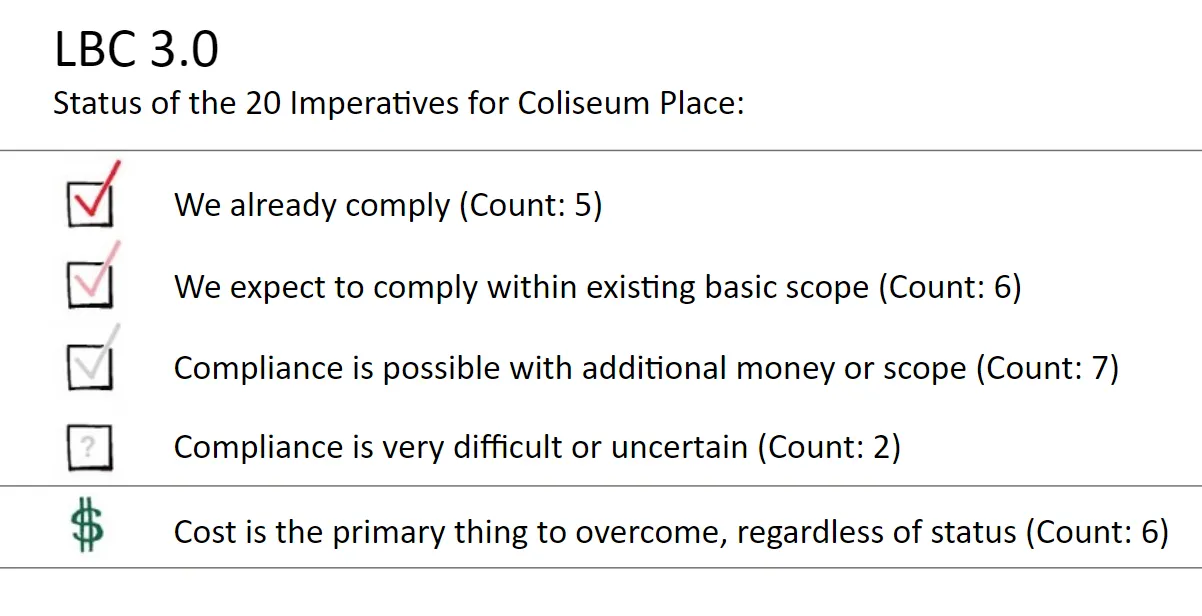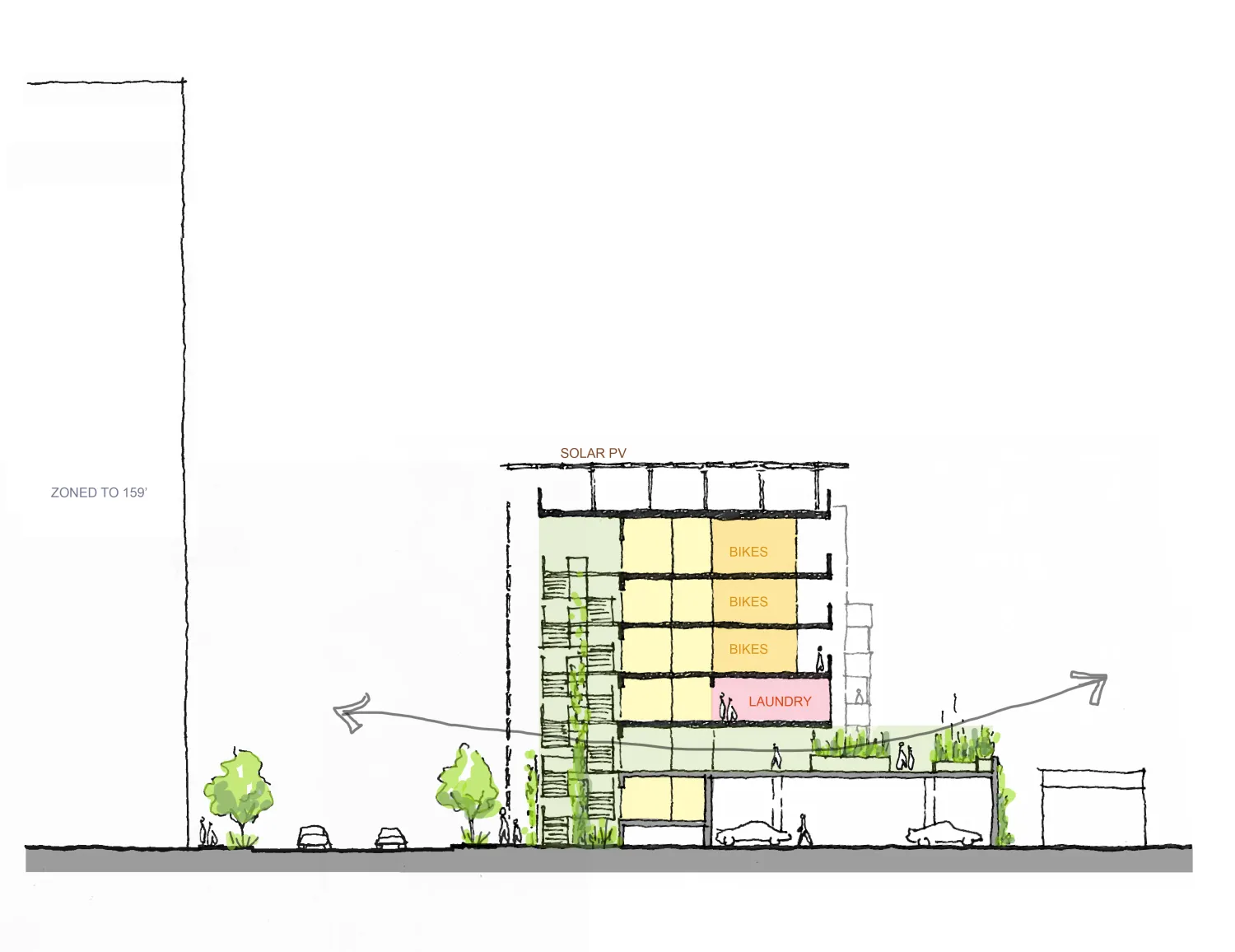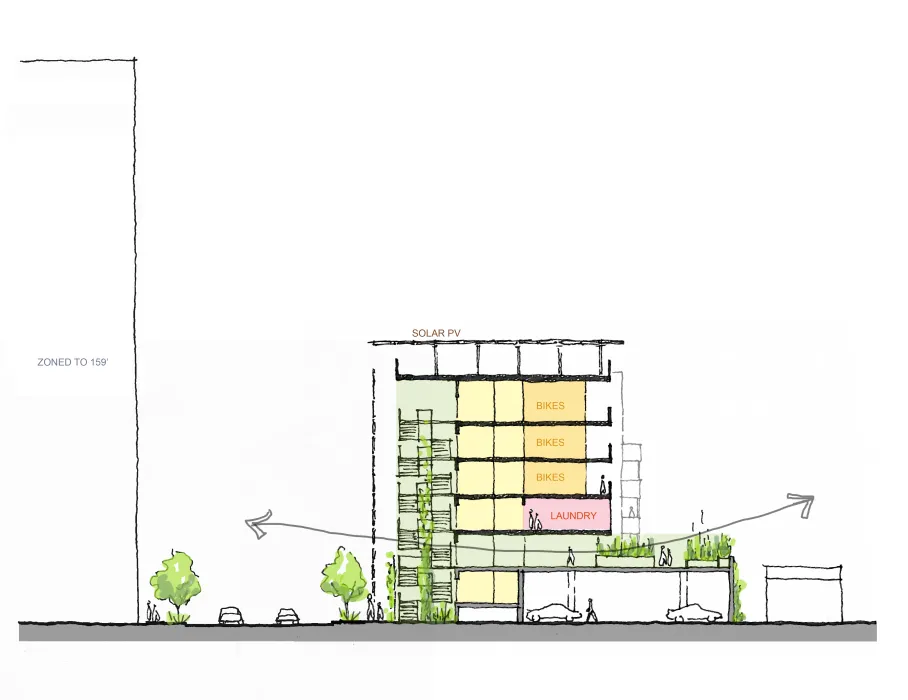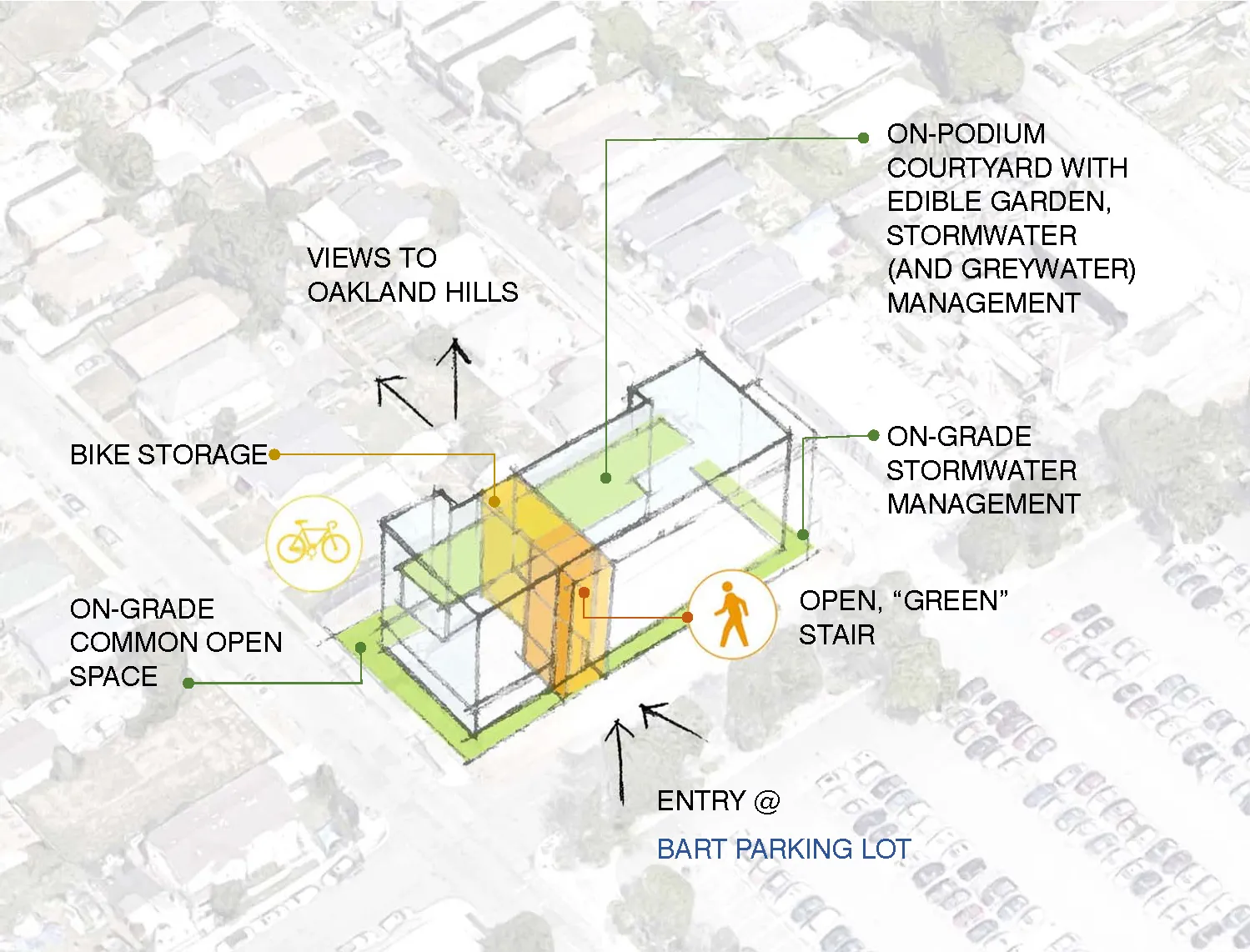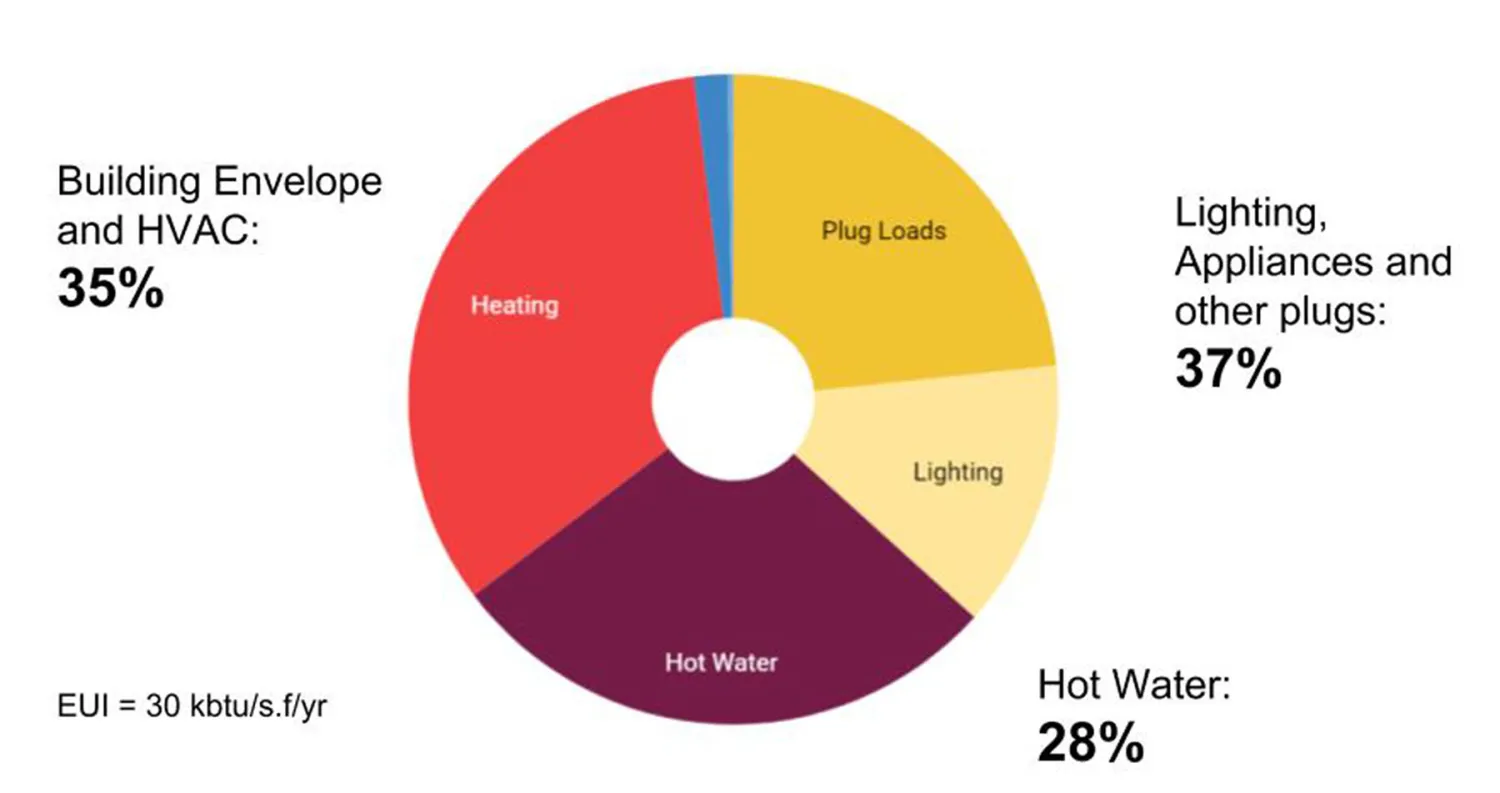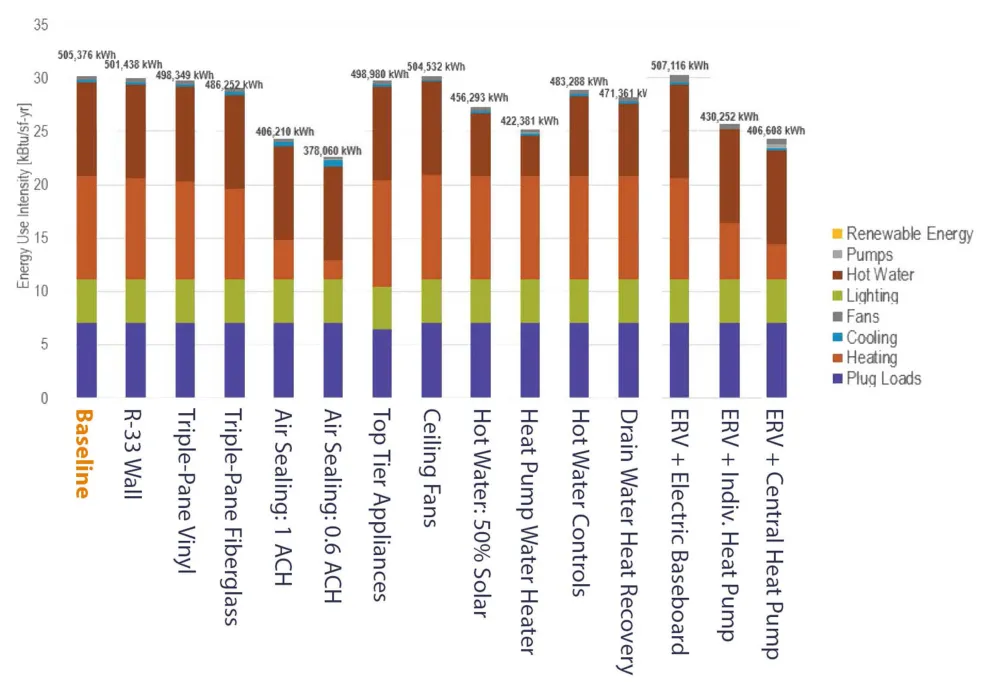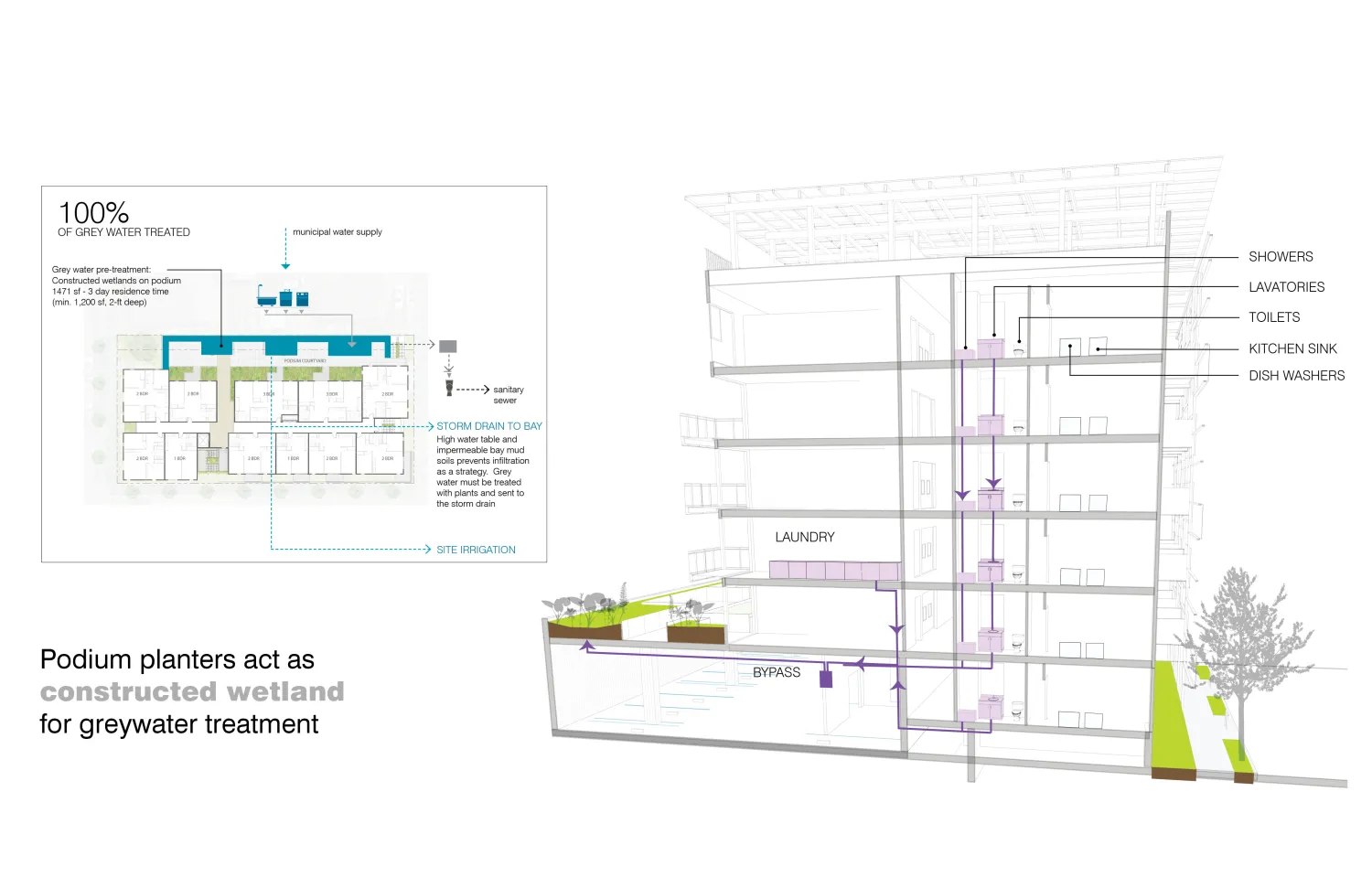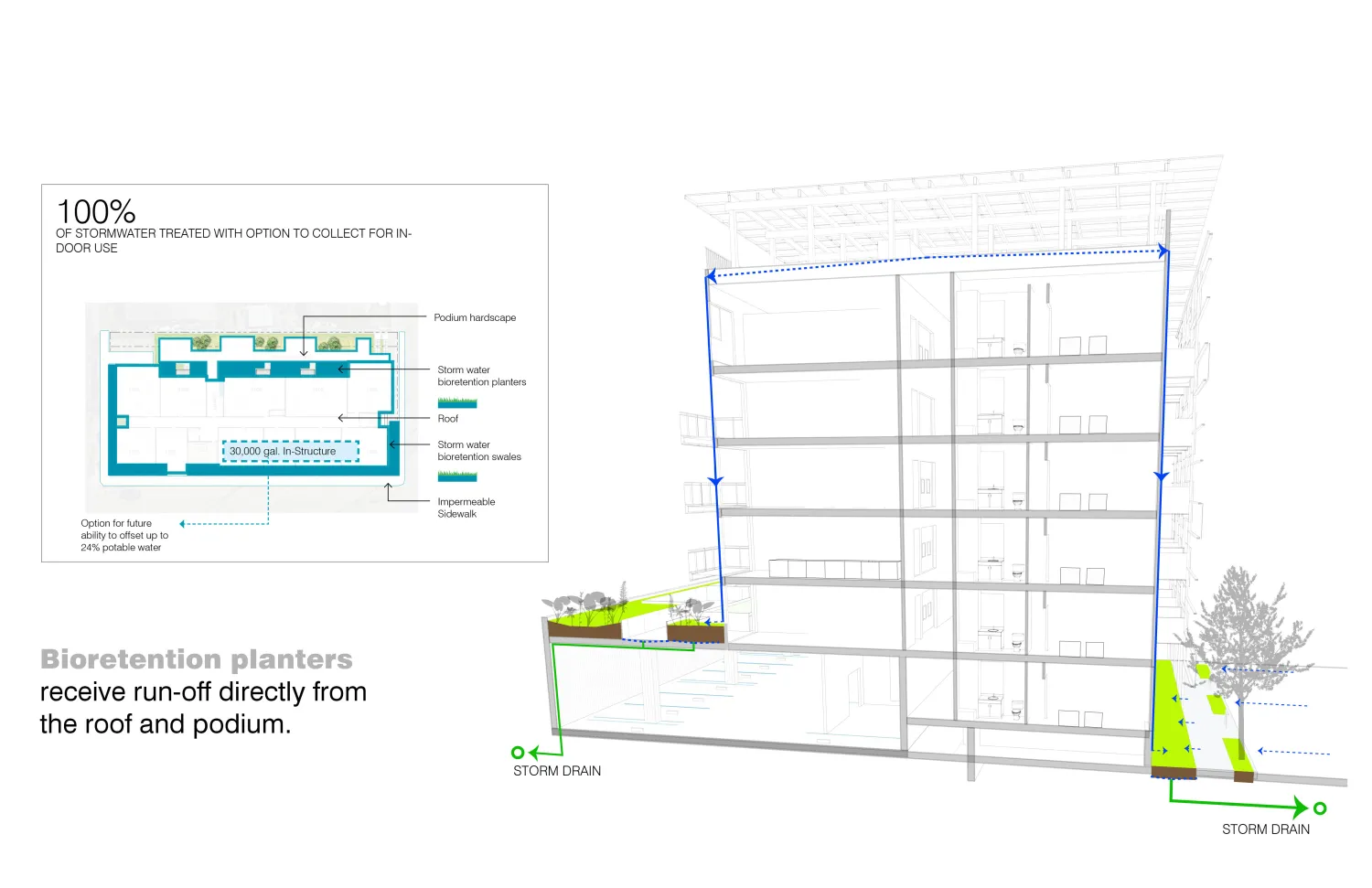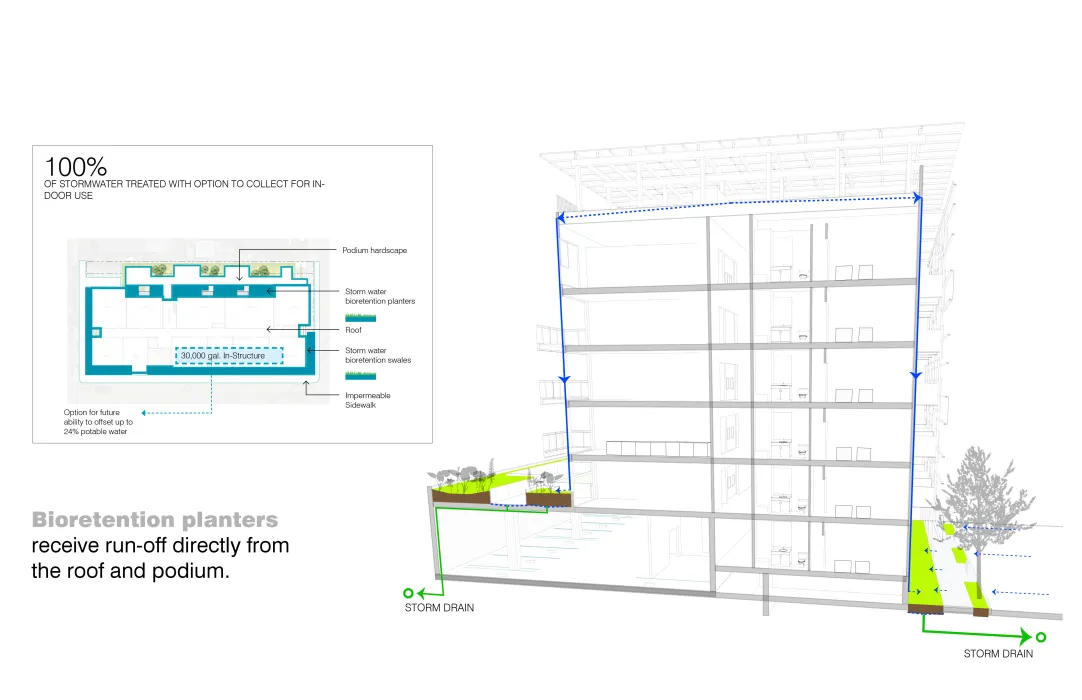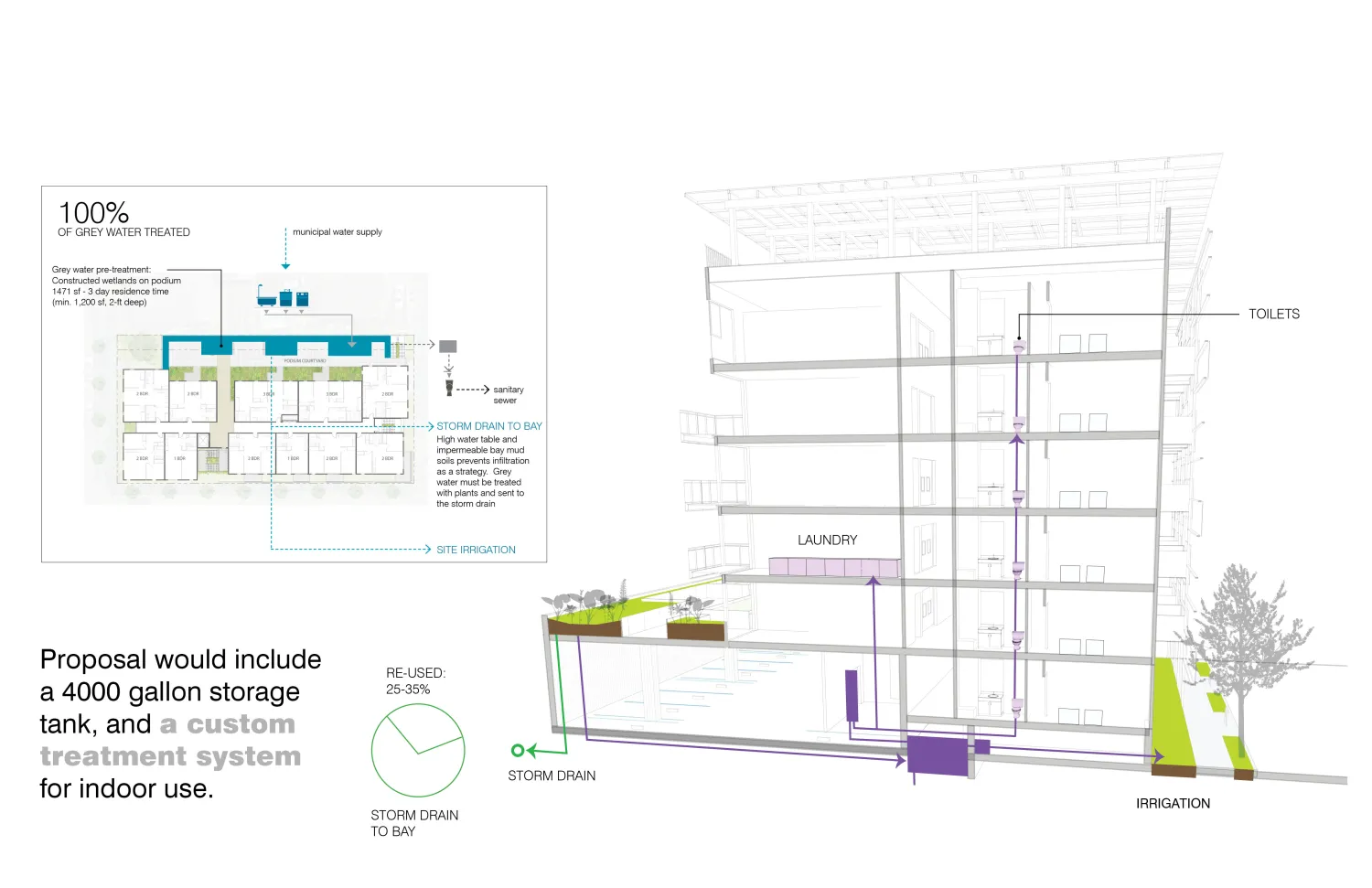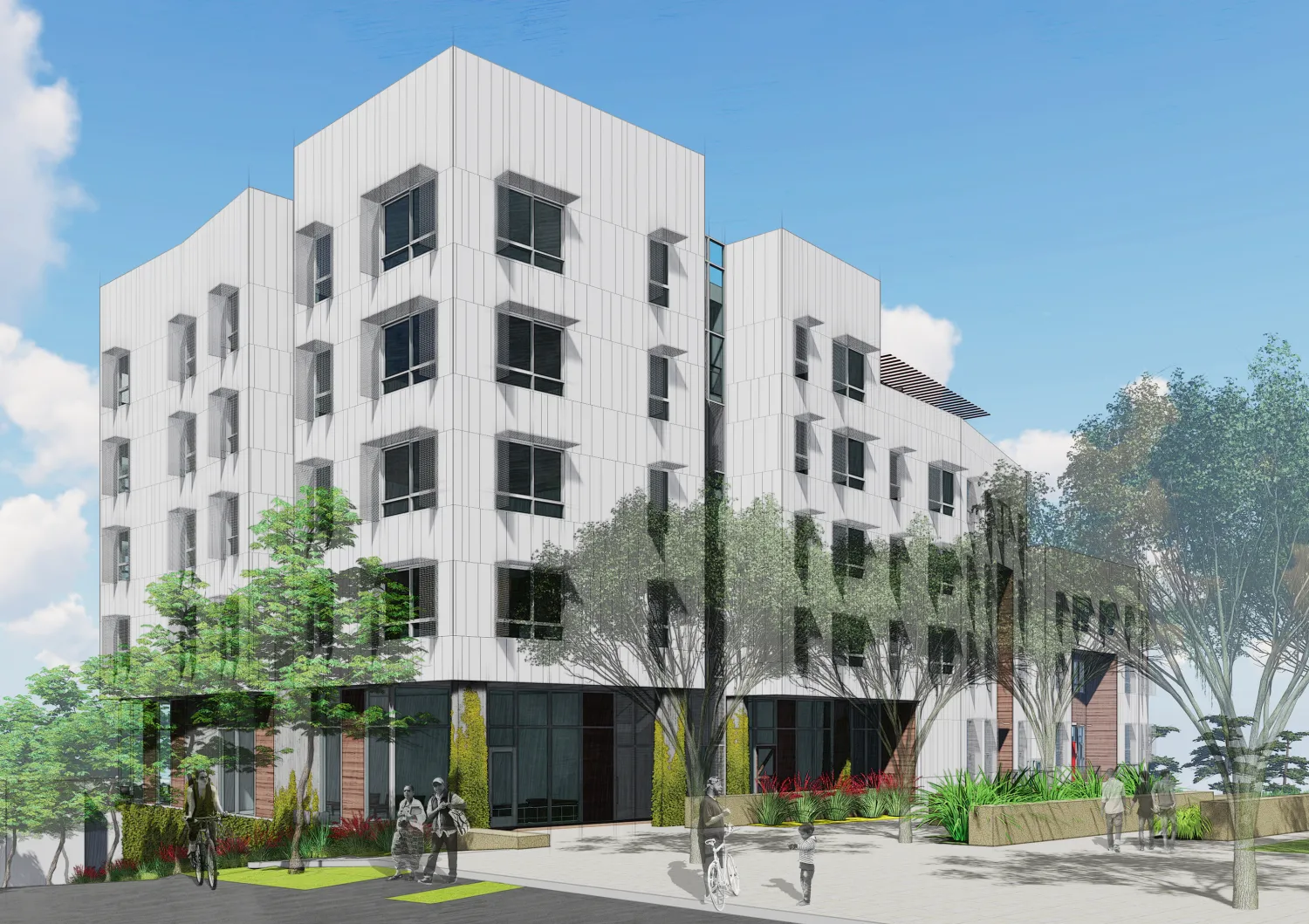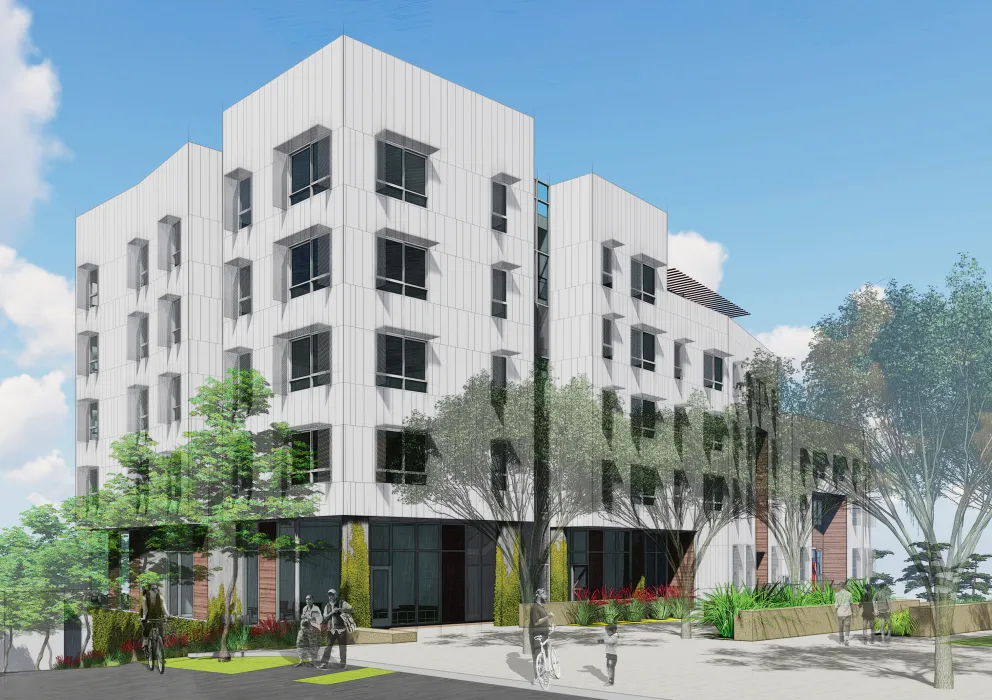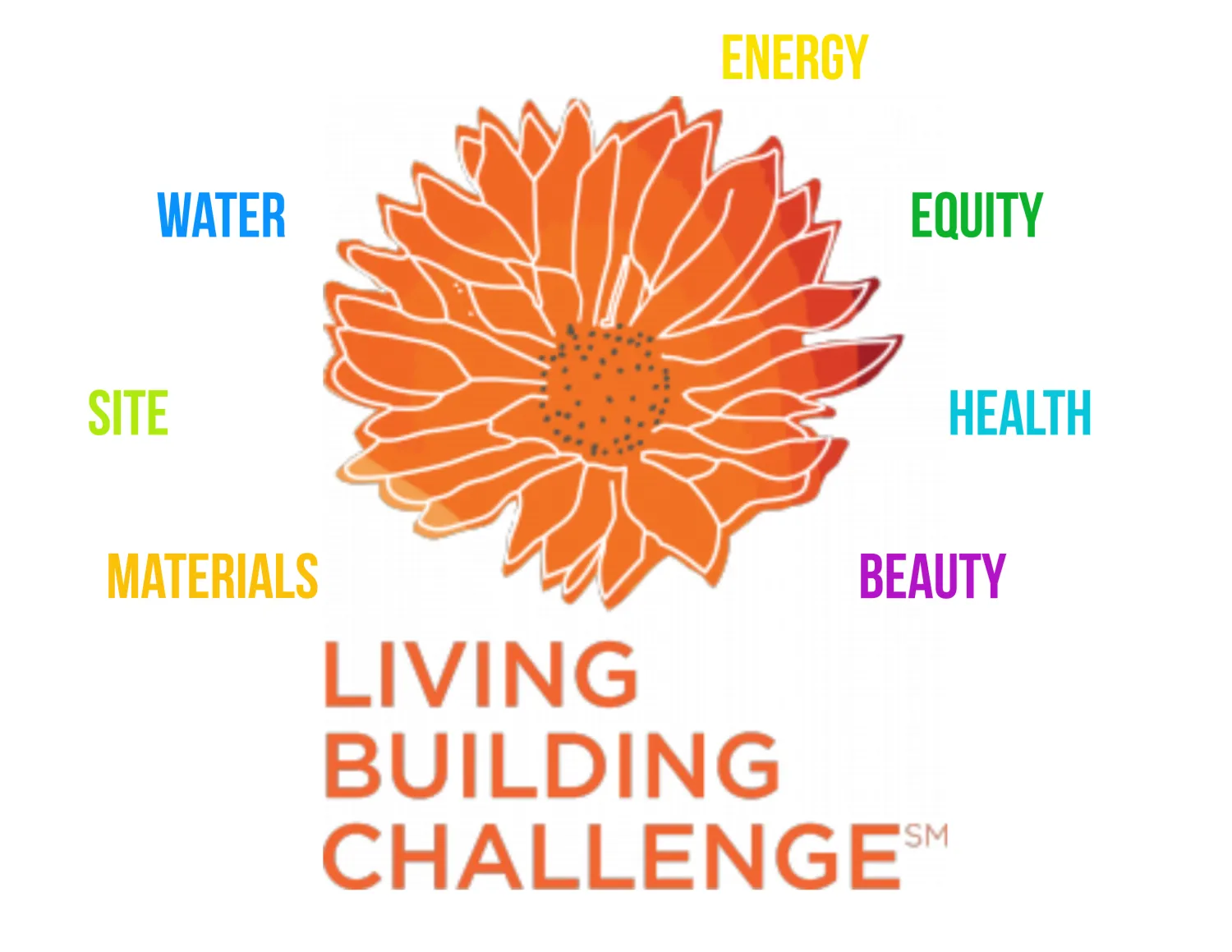
What is the Living Building Challenge?
The Living Building Challenge (LBC) is a sustainability certification based on the philosophy of the International Living Future Institute (ILFI) that a building should give back to the environment more than it takes—like a flower. The LBC is divided into the following seven performance areas, called "petals," wherein each petal contains a set of imperatives that outlines detailed requirements.
The most challenging requirements in reaching certification are:
- net-positive energy (generate 105% of the energy you consume);
- net-zero water (100% stormwater treatment, 100% greywater treatment, and 100% blackwater treatment—and all water used must be site-sourced); and
- the absence of “red-listed” toxic materials.
Traditional LBC Projects
There are currently 15 buildings in the world with full LBC-certification (another 58 have been certified for part of the standard), and these projects tend to have a few things in common.
Although there are certainly exceptions to the rule, the project sites that are often more accessible to certification are non-urban and in a location with decent rainfall; house a non-intensive use—like a learning center; and have a relatively high site-area-to-building-area ratio. Land makes it easier for a project to harvest more rainwater and treat blackwater relative to the quantity of plumbing fixtures as well as to install enough solar panels to power the building.
Additionally, traditional LBC projects tend to have clients with committed champions and project budgets that can absorb the additional hard and soft (design team) costs required for researching and achieving the more challenging imperatives.
The LBC and Affordable Urban Infill Housing
Midrise urban apartment buildings, especially those that are rented or sold below market rate, don’t exactly have those site and budget characteristics in common with traditional LBC projects.
Affordable urban housing is typically built with minimal setbacks in an urban infill site condition. The program of efficient apartment housing has a high amount of infrastructure (HVAC, plumbing, appliances) in relation to overall gross square footage and to roof area. Often over three or four stories, it can be a stretch for such projects to provide enough solar power to cover the projected energy use, although not impossible.
Dense urban buildings are also connected to larger urban infrastructure that has the ability to more efficiently address the intent of these measures at the neighborhood or city scale, rather than the site scale. And cities often have—for good reason—public-health policies in place restricting the re-use of site-treated water for both potable and greywater use.
On top of that, our non-profit developer clients are tasked with the incredibly challenging job of not only funding affordable housing, but also balancing the allocation of precious dollars toward critically needed homes with the mission of doing so in the most resilient and sustainable way possible.
The Affordable Housing Framework
The fact that affordable multifamily is among the building types most likely to be alienated by the Living Building Challenge became a point of focus for ILFI, which places social equity as a cornerstone of its philosophy. In 2013, the Institute convened a number of stakeholders to study and produce a pilot program and framework for certifying affordable housing projects. The framework document includes some high-level technical feasibility analysis and provides a few concessions to the LBC—most notably, buildings may rely more on municipal infrastructure for potable water, stormwater, and blackwater treatment, provided that a strategy is in place to site-source 100% of the building’s water demand in the future.
Along with our client, Resources for Community Development (RCD), DBA joined the pilot in 2015 with Coliseum Place, a 59-unit affordable family apartment building in East Oakland. The pilot has allowed us to share feedback, roadblocks, and resources with similar project teams.
When Coliseum Place was denied its first funding request in 2016, RCD used the schedule gap as an opportunity to conduct a feasibility analysis of the LBC for the project, using an Enterprise grant. Along with water and energy consultants Hyphae Design and Integral Group, DBA set out to identify imperatives that would push us beyond our standard practice of sustainable design without a major increase in scope, and to do a deeper investigation of design solutions that would be necessary to meet the more challenging imperatives of Energy, Water, and Materials. Below we summarize what we discovered about the LBC through this process, and, more generally, about the value of such aspirational frameworks when designing in dense, urban communities.
We assessed each imperative and assigned a compliance difficulty category—in the context of a non-profit affordable housing developer’s perspective. Some were a relatively straightforward assessment, and others—such as Energy, Water, and Materials—involved quite a bit of research and analysis to provide recommendations for our client that fit within the intent of an imperative, while having a high sustainability/equity impact compared with the relative cost of the upgrade.
Which Imperatives are "Easy"
We first assigned a compliance difficulty level to each imperative, based on how we typically work with a non-profit affordable housing developer. We were pleasantly surprised to discover that, by our judgement, over half of the 20 imperatives would be achievable within the existing project scope, and of these, we had already complied with five.
Certain imperatives, like 01: Limits to Growth or 07: Civilized Environment are inherent to the project’s status as an infill residential and community-focused development. Others, like providing active, tree-lined pedestrian edges and embedded parking, we would do as a matter of course, although this is not to say the LBC wouldn't have us take a somewhat more attentive approach to such goals.
Which Imperatives are Doable within Scope
This class of imperatives reveals the immediate value of the LBC to an architectural practice like ours, which iterates on the urban mid-rise housing type with every project. Between the group of imperatives that one can take for granted and those that are truly challenging, there is a class of imperatives that can push a team to think about ordinary design conversations in a new way, or to expand upon certain design opportunities.
A good example is 09: Biophilic Environment. To be honest, some of us cringe at the term biophilia; too often it feels like the word has disembodied fairly common-sense ways of connecting humans to nature and replaced them with pseudo-scientific or superficial gestures. Still, without a framework that forces us to pause and articulate our intentions for bringing residents closer to nature and a quality indoor environment, these are the very design features that can get glossed over, value engineered, or simply not receive an equivalent level of design thinking. DBA takes pride in how our projects achieve what some might call biophilia, and there is always room to deepen this commitment.
To comply with Imperative 09, the project team needs to submit a "Biophilia Plan” that articulates a response to the cultural, ecological, and climatic context of the project and explains how it “nurtures the innate human/nature connection.”
For Coliseum Place, although we are not yet in design, we began to brainstorm ways that we could approach existing building features—such as on-podium treatment planters and a courtyard connection—in ways that could further enhance resident experience of site and ecology.
Which Imperatives Are a Bit of a Stretch (Things that Add Scope and Soft Cost)
This class of imperatives would clearly add value to the project, if only a bit of extra investment could be mustered: For example, conducting iterative design energy models, installing systems with high upfront cost but very low operating costs, or monitoring indoor air quality. Also in this category are imperatives that simply take time and fee to document—such as carbon accounting, the detailed sourcing of all materials on the project, and waste diversion—and although having a clear benefit to the environment, these don’t yield as direct or obvious a return for the project.
We found the 06: Net-Positive Energy imperative to be technically possible for Coliseum Place, but ambitious. Still, the operational cost benefits tipped this imperative into the “possible” category, and Coliseum Place moves forward holding on to the goal of zero net energy (ZNE).
However, getting there for this six-story building may require making some different decisions about building systems and most likely a creative facilitation of resident appliance use without imposing too much control. Well over a third of the total building’s energy use will be determined by residents’ use of appliances, lighting, and other plug loads.
To get to ZNE through building design alone appears to require a focus on heating and water heating technology. Our initial energy model analysis showed that we could meet ZNE with a central heat pump for heating, another heat pump for hot water, and a tight building envelope, in addition to ENERGY STAR appliances and all-LED lighting. As we develop the design, the team is looking further at reducing hot water recirculation losses, and understanding whether electric vehicle chargers can be accommodated within the energy budget.
Which Imperatives Are Too Cost-Prohibitive, Unrealistic, or Uncertain
Imperatives in this and the previous categories are on a fairly subjective spectrum from “costs a little extra” to “this is not happening,” and that calculus would probably change project to project or even over the life of a single project as priorities and budgets shift. We cited cost as the biggest obstacle for six of the 20 imperatives, regardless of how great a cost it incurred or its technical feasibility.
For only two imperatives did we feel compliance was too difficult to determine—05: Net Zero Water and 10: Red List. The materials imperatives, especially the Red List, require making a commitment to a great deal of research in the face of uncertain outcome and cost implications.
Many would-be Living Buildings have fallen at the hand of the Red List (Imperative 10). To comply, every material specified in the project must be free of certain chemicals known to be toxic or to have a severe environmental impact. Historically, manufacturers have not been willing to disclose this information, and there are some product classes, like ethernet cables, in which harmful substances have historically been inherent and exceptions have been made if all avenues to acquire Red-List-free products have been exhausted.
The Red List has been in many ways a story of early-adopter magnanimity and a committed industry working together as an organism. After more than a decade of market transformation and LBC teams sharing their research, overcoming the Red List is not as great an obstacle as it used to be. In particular, ILFI has released several resources to specifically give affordable housing projects a major head start—with vetted product lists and draft specifications tailored for material decisions that typically arise in housing.
Still, even as soft-cost demands decline, achieving a Red List-free project is likely to come with added—and possibly prohibitive—hard costs, and some pilot teams have taken the fall-back position of using the LBC framework to help make decisions that allocate resources to materials that have high impact in either scope (there’s a lot of it), or health and environment (it particularly impacts residents), or both.
Some of the research conducted in the early pilot projects has helped inspire the HomeFree Initiative, a new resource for materials commonly found in affordable housing, supported by the Healthy Building Network. It shows a “hazard spectrum” for each material class and guidance on specifications to target when making decisions on a budget. ILFI has also recently collaborated on a new tool—Red2Green—that allows project teams to track materials in a shared database.
The major technical and cost challenge for Coliseum Place is meeting 05: Net Zero Water, even with the exemptions that are allowed under the affordable housing framework. Although it is possible to certify a project without site-sourced potable water under the framework, the future provision of site-sourced water assumes that a complying building design will start with some amount of rainwater collection.
Meanwhile, a building like Coliseum Place generates more greywater than it can manage. Showers alone provide more than enough supply to serve the legal non-potable demand (toilets, laundry, irrigation). Plus, the rainwater available on site would never be enough to provide for the potable demand—such as showers and dishwashing—without some real outside-the-property-line creativity.
In theory, we do in fact have an unusual opportunity at Coliseum Place to allocate some space in the building for a 30,000 gallon rainwater cistern (which would bring us to 62% potable demand reduction). And we can explore creative ways of getting to zero—for example, using excess greywater to offset the potable water use of neighboring properties—and claim that offset for our project. But the fact remains that there is no logical reason, on the basis of resource efficiency or community resilience, to pursue these strategies for Coliseum Place, other than to meet the LBC. In fact, doing so would probably present heavy operational burdens that would in very real terms take resources away from the already strained ability of non-profit property managers to meet the needs of their residents.
Turning the building into its own wastewater treatment plant—by using an out-of-the-box blackwater treatment system like the Aquacell—in many ways would be the simplest compliance approach. But that sentence itself sent up a red flag for our team. We discovered that such a system, on a site-by-site basis, could use four to eight times the energy it would take to perform the same task at a municipal scale, bringing to light for us the limitations of the LBC as a framework for envisioning and delivering sustainable urban communities.
For an affordable housing project, it seems critical that a high cost to meet the LBC must come with a commensurate direct benefit to the core mission of building stable, resilient urban communities through housing. In fact, in the purest incarnation of its vision, the Living Building Challenge would not pose such a conflict. And yet we think that the premise of zero net site energy and water use can present some serious questions about the definition of a “Living Building” in an urban context.
The Takeaway
So, how should we understand the Living Building concept in the context of building stable, resilient, urban communities? Can a Living Building be dependent on a shared infrastructure and still be a Living Building? (After all, can the flower really exist without the support of its surrounding ecosystem?) The ILFI continues to wrestle with these questions as the Challenge evolves.
For our team, evaluating the benefits of high-cost LBC items comes down to asking whether the cost improves the quality of the homes and the experience, health, and resilience of the residents in their community. This is not to suggest that this is an easy assessment to make, but the power of the LBC is that it compels a design team to commit—earnestly—to trying.
By using the framework, we can prioritize those solutions that have a high value based on a new, more inclusive set of rules. For instance, our energy model iterations showed that investing in Passive House-level air tightness with balanced ventilation was the single most cost-effective investment we could make to reach net-positive energy, and this benefit is realized regardless of whether we successfully match energy demand with on-site generation.
There is also a value proposition to be made in drought-sensitive California to pursue on-site greywater treatment in order to reduce potable water use for irrigation and toilet flushing, and to promote innovation and conservation in the community. These measures still may be cut from the budget, but at least there is a basis for discussion beyond construction cost alone.
It should be noted that few affordable housing pilot teams enter the process believing that they will achieve certification. But, for aiming high, they have gotten farther in their commitments than they would have otherwise and have raised the bar in their thinking for all future projects.
This was our team rationale as well in entering the pilot. In 2018, ILFI kicked off Round 3 of its pilot program, and we are happy to have a second project participating in the pilot: Hunters View Phase III (HVIII), which will pose its own unique opportunities and constraints. Both projects are moving forward, and we hope to leverage new explorations into the Challenge for both projects.
There are many good reasons to pursue the Living Building Challenge. Because we gave ourselves some space to do the initial legwork—by turning a funding shortfall into an opportunity—we learned things about our project type and regulatory environment that we didn’t know, even after designing dozens of similar projects.
We are also excited about the opportunity to use the LBC on both Coliseum Place and HVIII as a method for framing project narratives, goals, and decision-making to get farther than we would have with a business-as-usual process. And should Coliseum Place not achieve full certification, this new knowledge will not disappear, but will be transferred and leveraged to make a better project and also applied to other projects in our portfolio.
We are in a better position to advocate for strategies that didn’t make sense for Coliseum Place but may make sense in another scenario, and we can now challenge conventional wisdom from a more informed place. Furthermore, we are in a better position to identify new opportunities when regulations and products in the market open new doors.
We will report back as these two projects—Coliseum Place and Hunters View Phase III—move forward.
